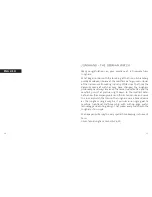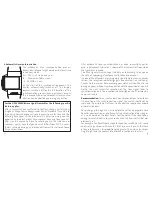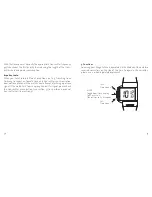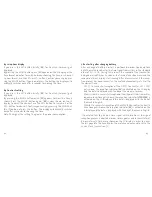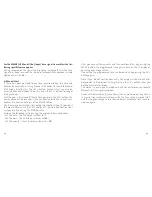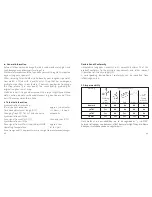
33
32
2. Automatic time synchronisation
The automatic time synchronisation process
always takes place at night based on the local time
set on your watch:
EU – DCF 77: at 2 a.m. and 3 a.m.
JP – JJY40 and JJY60: c. 2 a.m.
US – WWVB: c. 2 a.m.
At the start of the synchronisation process the
display automatically switches off. The display
remains switched off for the full duration of the
synchronisation process (max. 9 minutes) or until
this is manually aborted. Automatic time synchro-
nisation can be aborted by pressing any button.
For the USA’s WWVB time signal transmitter the following specific
feature applies:
After a successful transmitter call or battery change (restart), your
Junghans Mega Futura always reads Pacific Standard Time. Due to
the non-uniform changeover from summer to winter time and the
differing time zones in the individual US states, you are given the
opportunity to adjust winter time, summer time and time zone set-
tings (see 6.1) manually. If, due to where you are, the time zone or
summer / winter time that you have set differs from PST, it is never-
theless retained during any subsequent transmitter call or automa-
tic synchronisation.
After automatic time synchronisation has been successfully perfor-
med, a permanent indicator is shown of the transmitter from which
the signal was received.
The time signal always changes the date automatically. In leap years
the 29th of February gets automatically taken into account.
If none of the attempts at picking up a signal lead to clear synchroni-
sation, the reception indicator
gets deactivated (see section 4).
Thanks to the internal time-memory, your watch will continue to run
during any days without synchronisation with the precision of a quartz
watch. The next successful reception of the time signal leads to
synchronisation and the reception indicator
on the LC display be -
comes activated.
Recommendation:
To ensure the best possible conditions for automa-
tic reception of the synchronisation signal, the watch should not be
worn and, if possible, not left near to any electrical appliances, mobile
or cordless phones.
For picking up the signal it is also helpful to set the appropriate time
zone for your location, as an attempt at synchronisation always begins
at c. 2 a.m. based on the local time set on the watch. If the time zone is
wrong, the watch will try to synchronise with the transmitter that was
previously set.
For example: You travel from Europe to Japan. Your watch has CET saved
and tries to synchronise in line with CET at 10 a.m. in Japan. At that time
of day interference is disproportionately greater than when synchroni-
sing at night and the chances of optimum reception are thus less.


